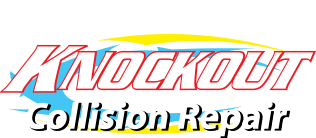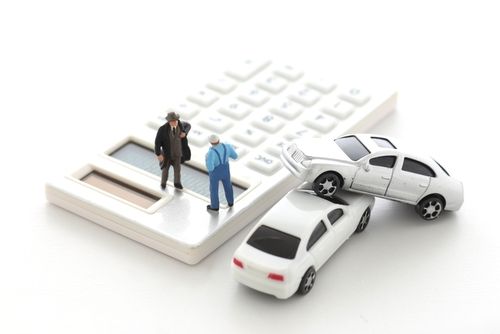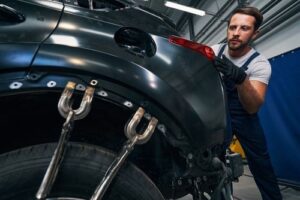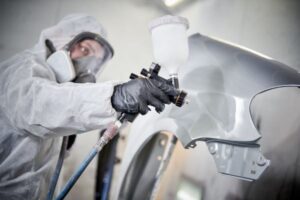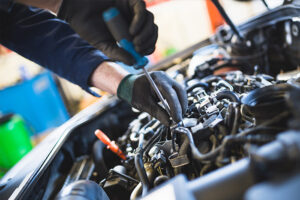In the intricate world of auto body repair, one of the specialized services that demands attention is unibody repair. This blog aims to unravel the complexities of unibody repair, exploring the integral parts that constitute the unibody structure, when such repairs become necessary, and why seeking the expertise of a professional auto body repair shop is paramount.
Understanding the Unibody Structure
- Chassis and Frame Integration: Unlike traditional body-on-frame construction, unibody vehicles incorporate the chassis and frame into a single, integrated structure. The unibody, short for “unitized body,” serves as both the frame and the body of the vehicle. This design enhances structural rigidity, reduces weight, and contributes to better handling and fuel efficiency.
- Structural Components: The unibody structure consists of various interconnected components, including the floor pan, roof, pillars, side panels, and wheel arches. These components work in harmony to create a cohesive and robust framework that defines the vehicle’s shape, strength, and safety features.
- Crumple Zones for Safety: Unibody designs often incorporate strategically engineered crumple zones. These are areas designed to deform in a controlled manner during a collision, absorbing and dissipating energy to enhance occupant safety. This feature is a testament to the thoughtful design of unibody structures.
Necessity of Unibody Repairs
- Collision Impact:
Unibody repairs become necessary when a vehicle experiences a collision or significant impact. Even seemingly minor accidents can affect the structural integrity of the unibody, compromising its safety features and overall performance.
- Structural Misalignment:
Structural misalignment is a common consequence of collisions. This misalignment can manifest as uneven gaps between body panels, off-center steering wheels, or issues with the vehicle’s suspension. Addressing these concerns through unibody repairs is crucial for restoring the vehicle to its pre-collision state.
- Rust and Corrosion:
Over time, exposure to harsh weather conditions can lead to rust and corrosion on the unibody structure. Rust compromises the integrity of the metal, affecting both the vehicle’s safety and aesthetics. Unibody repairs are essential to address and prevent further corrosion.
- Wear and Tear:
General wear and tear, especially in regions with challenging weather conditions, can take a toll on the unibody structure. Professional inspections and repairs become vital to address issues before they escalate, ensuring the longevity and performance of the vehicle.
The Role of Auto Body Repair Shops
- Expert Diagnosis: Professional auto body repair shops play a crucial role in the unibody repair process. Their expertise allows for accurate diagnosis of structural damage, ensuring that all issues are identified and addressed during the repair process.
- Precision Repairs: Unibody repairs require precision and specialized techniques. Auto body repair shops equipped with advanced tools and technology can accurately manipulate and restore the damaged sections of the unibody structure, ensuring a seamless repair that aligns with the manufacturer’s specifications.
- Safety Standards Compliance: Auto body repair shops adhere to stringent safety standards. Ensuring that unibody repairs are performed by professionals guarantees that the vehicle meets or exceeds safety regulations, providing peace of mind to the vehicle owner.
- Structural Integrity Restoration: The primary goal of unibody repairs is to restore the structural integrity of the vehicle. Professional repair shops use their expertise to bring the unibody back to its original specifications, maintaining the intended balance between safety and performance.
- Advanced Technology Utilization: Auto body repair shops leverage advanced technology, including computerized measuring systems, laser alignment tools, and frame straightening equipment, to ensure the accuracy and precision of unibody repairs. This technology allows for meticulous adjustments, critical in restoring the vehicle’s original form.
Conclusion
Unibody repair is a specialized service that requires the expertise of a professional auto body repair shop. As the integral components of the unibody structure work together to create a cohesive and safe vehicle framework, addressing damages promptly is crucial for both safety and performance. Whether the need arises from collisions, misalignments, rust, or general wear and tear, entrusting the unibody repair process to skilled professionals ensures that your vehicle is in capable hands. Auto body repair shops, armed with advanced technology and a commitment to safety standards, play a pivotal role in the restoration of unibody structures, ensuring that your vehicle emerges from the repair process with both its aesthetics and integrity intact.
